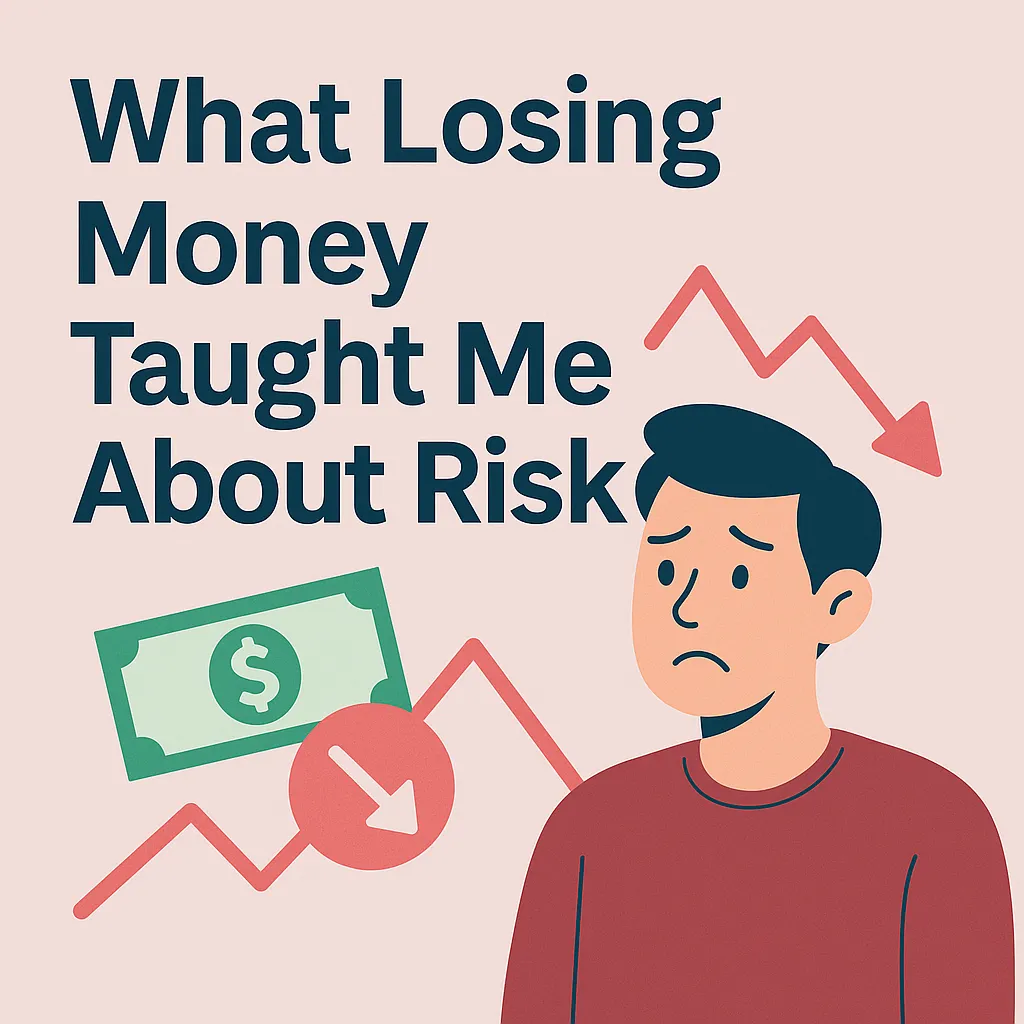
What Losing Money Taught Me About Risk And How I Changed My Strategy
I remember the first time I lost money from an investment. It wasn’t a huge amount—just under $20—but it hit me harder than I expected. It wasn’t just the financial loss; it was the emotional punch. I felt embarrassed, frustrated, and confused.
But looking back, I’m actually grateful for that experience. It taught me more about risk, mindset, and strategy than any book or video ever did.
How I Lost the Money
It was early 2025. I had just started investing and came across a crypto token that was gaining popularity on social media. Everyone was saying, “It’s the next big thing.” I didn’t do proper research. I didn’t even understand what the project was about.
I just thought, “If this goes up 50%, I’ll double my money.”
I bought at the top. Within three days, the price dropped by 60%. I panicked and sold, locking in the loss. The token eventually disappeared from the trending list—and so did my money.
The Emotional Aftermath
I didn’t just lose $20. I lost confidence. I started questioning whether I was cut out for investing at all. I avoided checking my app for days.
But eventually, I realized: this wasn’t the end. It was a turning point.
What I Learned About Risk
- Risk is real — not just a number. I used to see “risk tolerance” as a setting in the app. But feeling the fear and regret made me understand it’s also emotional.
- FOMO is dangerous. I jumped in because I didn’t want to “miss out.” That’s not strategy—that’s gambling.
- Never invest in what you don’t understand. If you can’t explain what you’re buying to a friend, you probably shouldn’t be buying it.
How I Changed My Strategy
After the loss, I took a step back and rebuilt my approach from scratch:
1. I Created a Checklist
Before buying anything, I now ask myself: Do I understand it? What’s the risk? What’s the exit plan?
2. I Stopped Chasing Hype
I unsubscribed from most “crypto pump” channels and stopped following random tips. Instead, I focus on learning from credible sources and forming my own opinion.
3. I Diversified
Instead of putting all my small capital in one bet, I spread it across 3–5 different assets. That way, one bad pick wouldn’t wipe out my whole portfolio.
Why That Loss Was a Gift in Disguise
I know that sounds strange. But if I hadn’t lost that money early on, I might’ve made even bigger mistakes later—when more was at stake.
The sting of that first loss gave me a healthy respect for risk. It forced me to slow down, do my homework, and build a better system.
My Advice for You
- Don’t be afraid of losing — be afraid of not learning. Mistakes are part of the journey, but only if you reflect on them.
- Small losses teach big lessons. Better to lose $20 now and learn, than lose $2,000 later and quit.
- Write down your emotions. Tracking how you feel during a loss builds emotional resilience.
- Use mistakes to build a better strategy. Don’t just feel bad — adjust and improve.
Final Thoughts
Losing money isn’t fun, but it’s not the end of the road. In fact, it might be the beginning of real growth. That small failure helped me develop stronger habits, better risk management, and more confidence over time.
If you’ve lost money investing, you’re not alone. Just don’t waste the lesson. 💡
